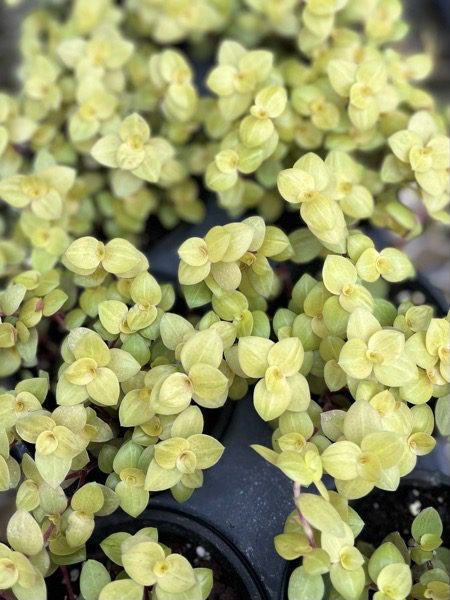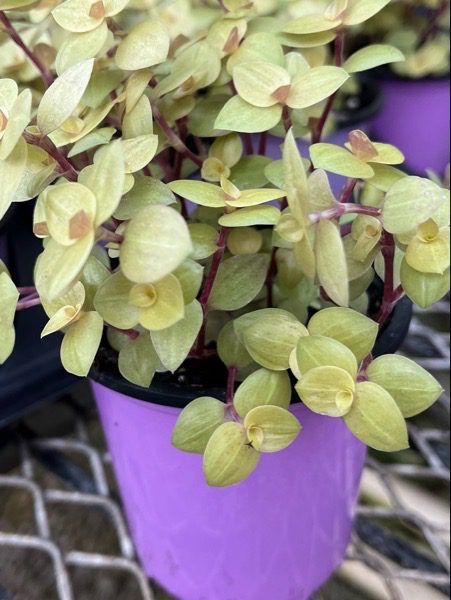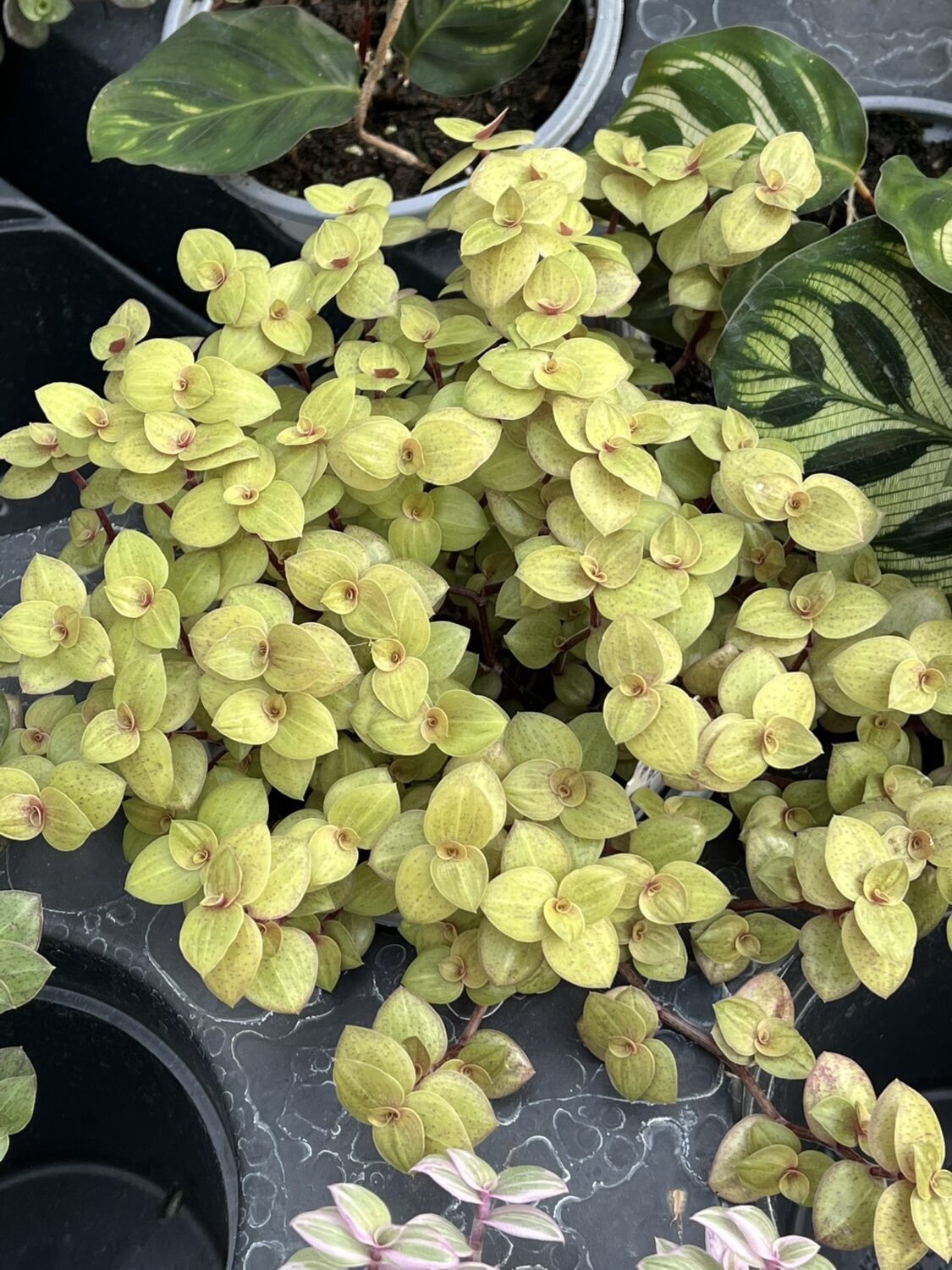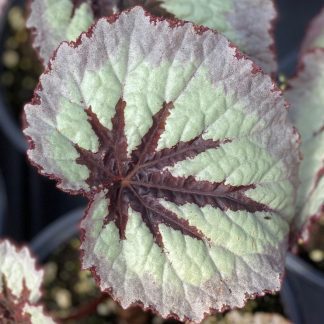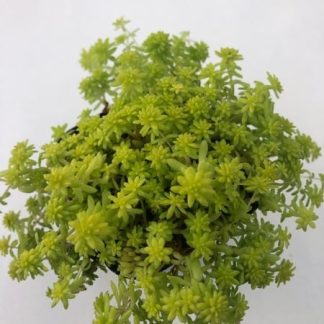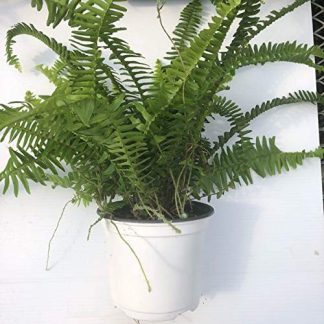Description
Welcoming the Golden Glow of Callisia repens ‘Bolivian Jew Golden’
Have you ever spotted a pot overflowing with tiny, round leaves that shine like drops of sunrise? That charming sight is often Callisia repens ‘Bolivian Jew Golden’, a compact trailing plant with a big personality. In this deep-dive guide, we’re going to explore every sparkling angle of this golden beauty. By the end, you’ll feel ready— and eager— to bring its warm glow into your own space.
1. Meet the Plant
1.1 A Pocket-Sized Marvel
Callisia repens is a small, creeping plant in the spiderwort family. The ‘Golden’ form dazzles with lime-yellow foliage kissed by soft pink on the undersides. Each leaf is no bigger than your fingertip, but together they form lush mats that spill over pots and baskets.
1.2 Origins and Natural Habitat
Native to South and Central America, Callisia repens crawls along moist forest floors and rocky slopes. It likes dappled light, brief sun, and warm, humid air. In other words, it feels most at home where days are bright but gentle and nights stay balmy.
1.3 Name Notes
“Bolivian Jew” is one of many trade names used for cascading tradescantia relatives. Some growers call it Turtle Vine, Creeping Inch Plant, or simply Golden Callisia. No matter the label, we’re talking about the same cheerful trailing jewel.
2. Why We Love It
2.1 Visual Pop
Bright, chartreuse leaves turn any dull corner into a spotlight. Place it near darker plants, and the contrast sings. Hang it high, and the vines form golden waterfalls.
2.2 Versatile Size
Because its stems stay short and leaves stay tiny, ‘Golden’ fits desktop pots, bookshelf planters, fairy gardens, and terrariums. Instead of one big statement, it offers endless small moments of joy.
2.3 Fast but Manageable Growth
Give it what it wants, and Callisia repens races ahead, filling gaps in weeks. Yet it stays shallow-rooted and easy to trim. Rapid satisfaction, low stress.
2.4 Gentle Air-Purifying Power
Like its spiderwort cousins, it helps clear indoor air of light toxins. You won’t replace a HEPA filter with it, but every leaf adds a touch of fresh support.
3. Simple-Science Breakdown
We learn best when concepts feel clear. Let’s break plant needs into five core factors— Light, Water, Soil, Air, Food— plus two extras, Pruning and Propagation.
4. Light: A Soft Sunrise, Not a Desert Noon
Goal: Bright, indirect rays for most of the day. Morning sun for 1-2 hours is great. Hot afternoon sun can scorch leaves.
Signs of Trouble:
- Pale or washed leaves → Too little light.
- Crispy edges → Sunburn.
- Long, thin stems → Reaching for light.
Pro Tips:
- Place near an east-facing window.
- Use a sheer curtain on south windows.
- Rotate the pot weekly so every side gets the glow.
5. Water: Steady Sips, Never Soaks
Goal: Moist but not waterlogged soil. Think of a wrung-out sponge.
Routine:
- Stick your finger ½ inch into the mix.
- If it feels dry at that depth, water until a few drops slip out of the drainage hole.
- Empty any catch tray within 10 minutes.
Seasonal Shifts:
- Spring & Summer: The plant grows fast and drinks more. Check soil every 2-3 days.
- Fall & Winter: Growth slows. Stretch checks to once a week.
Signs of Trouble:
- Yellow, mushy leaves → Roots sitting in water.
- Crispy brown tips → Extended drought.
6. Soil: Light, Loose, and Leafy
Ideal Mix:
- 50 % high-quality potting soil
- 25 % fine pine bark or coco coir
- 25 % perlite
This trio stays airy yet moist. Instead of heavy clay, you offer channels for breath and drainage.
7. Air: Warm Days, Mild Nights
Temperature Range: 65-85 °F (18-29 °C) gives the strongest color. Below 55 °F (13 °C), growth stalls.
Humidity Sweet Spot: 50 % or higher. Dry air can dull the golden hue and brown leaf edges.
- Keep a pebble tray under the pot.
- Group plants together for a shared bubble of moisture.
- Mist lightly in the morning if indoor humidity drops under 40 %.
8. Food: Gentle Feeding, Giant Gratitude
Schedule: Use a balanced liquid fertilizer (half strength) once a month from spring through early fall. Pause in winter.
Quick Reminder: Overfeeding can bleach leaves or burn roots. When in doubt, feed less often.
9. Pruning: Clip and Shape With Ease
Because stems grow fast, light trims encourage a full, bushy form.
- Pinch back leggy tips at any node.
- Remove brown or damaged leaves as soon as you spot them.
- Use clean scissors to prevent disease spread.
Not only does pruning shape the plant, but every snip becomes potential new baby plants.
10. Propagation: Sharing the Golden Wealth
10.1 Stem Cuttings in Water
- Snip a 3-inch section with at least two leaf nodes.
- Strip the bottom leaves and pop the cutting into a glass of water.
- Place it in bright, indirect light.
- Roots sprout in 7-10 days.
- Move the rooted cutting into soil when roots reach 1 inch.
10.2 Stem Cuttings in Soil
- Prepare a small pot with the same loose mix used for adults.
- Dip the cut end in rooting hormone (optional but boosts success).
- Insert the stem so at least one node is under the soil.
- Keep the mix slightly moist.
- New growth shows in 2-3 weeks.
Either path turns clippings into gifts for friends or fresh inserts for your own pot, making the mother plant look fuller.
11. Common Problems and Simple Fixes
| Symptom | Likely Cause | Fast Action |
|---|---|---|
| Leaves lose yellow color, turn green | Low light | Move closer to window, add grow-light |
| Leaf spots and mushy patches | Standing water, poor airflow | Prune damaged parts, improve drainage, add fan |
| Brown crisp tips | Low humidity or fertilizer burn | Mist lightly or flush soil with plain water |
| Long, bare stems | Old age or low light | Cut back and root tips for fresh growth |
Instead of panicking, treat each sign as friendly feedback. Adjust, observe, and learn— and the plant will bounce back.
12. Creative Ways to Display ‘Golden’
12.1 Hanging Glow
Place it in a macramé hanger near a window, and watch trails glow like sunshine ribbons.
12.2 Desk Edge Drip
Set a small pot on the corner of your desk so vines trickle down like liquid gold. Work feels warmer instantly.
12.3 Fairy Garden Carpet
Use cuttings to form a tiny meadow in a shallow dish garden. Mini figurines look magical against the bright mat.
12.4 Terrarium Accent
Because leaves stay small, one sprig sneaks into glass globes without crowding other residents.
12.5 Shelf Highlight
Prop a dark wood shelf with one or two trailing cascades. The color contrast draws eyes upward and adds depth to décor.
13. Seasonal Care Calendar
| Season | Light | Water | Feed | Extra Tasks |
|---|---|---|---|---|
| Spring | Bright, shield midday | Check soil every 2-3 days | Start monthly feeding | Repot if roots peek |
| Summer | Morning sun fine, shield harsh noon | May need daily sips in heat | Continue monthly | Mist if humidity dips |
| Fall | Maintain bright but reduce direct rays | Stretch checks to twice a week | Feed until mid-fall | Trim back overgrowth |
| Winter | Brightest spot you have | Weekly, maybe less | Stop feeding | Keep away from drafts |
Instead of memorizing dates, use this table as a compass. Observe, feel the mix, and let the plant direct small tweaks.
14. FAQs We All Ask
14.1 Is Callisia repens toxic to pets?
Mildly. Ingesting large amounts can upset stomachs. Keep it out of reach of nibbling cats, dogs, or curious toddlers.
14.2 Can I grow it outdoors?
Yes—but only in frost-free zones (USDA 9-11). Use it as a groundcover in bright shade. If you live in cooler areas, treat it as an annual or bring pots inside before temperatures dip below 55 °F.
14.3 My plant looks leggy. What now?
Pinch stems back to the length you want. Root the cuttings and plant them around the original crown. In weeks, you’ll have a thick, happy mound again.
14.4 Do I need a special pot?
Any container with drainage works. Shallow bowls suit its shallow roots. Hanging baskets let trails shine.
14.5 Why are leaves turning green instead of gold?
Light is likely too dim. Move closer to a bright window or add a small grow-light for 12-14 hours per day.
15. Propagating Joy: Sharing and Trading
Houseplant communities thrive on swaps. Because ‘Bolivian Jew Golden’ roots so fast, you can:
- Trade cuttings for new species.
- Gift baby plants at holidays.
- Craft tiny rooted favors for garden club meetings.
After more than a few swaps, you’ll see how this humble trailer connects friends across windowsills and borders.
16. Troubleshooting Timeline
- Observe: Check leaves and soil twice a week.
- Adjust: Change one factor at a time—light, water, or airflow—so you know what works.
- Record: Keep a simple notebook log. Note dates you water, feed, or trim.
- Reflect: After a month, review notes. Spot patterns. Fine-tune care.
Instead of guessing, you gain clear insight. Your plant responds, and your confidence grows.
17. Pairing Plants for a Living Palette
‘Golden’ shines when teamed with deep greens, purples, or silvery blues. Try these combos:
- Calathea lancifolia for ripple leaves and forest-green tones.
- Tradescantia zebrina for purple stripes that echo the pink leaf undersides.
- Peperomia ‘Silver Ripple’ for cool metal contrast.
Mixing textures lets each variety highlight the other, creating a layered jungle scene.
18. Repotting: A Gentle Refresh
When to Repot: Every 12-18 months or when roots circle the pot base.
Steps:
- Water the plant the day before. Moist soil slips out easily.
- Choose a pot 1 inch wider.
- Fill base with fresh airy mix.
- Slide the plant out, tease roots gently.
- Center it in the new pot, backfill, and tap to settle.
- Water lightly and place in shade for a day to recover.
Instead of a stressful move, repotting feels like a spa day—new shoes, fresh room, revived vigor.
19. Light Science Simplified
Leaves carry pigments called chlorophyll (green) and carotenoids (yellow). Strong light boosts carotenoids, deepening the golden glow. Dim light tips the balance toward chlorophyll, turning leaves greener. In other words, light is the paintbrush that sets the plant’s color.
20. Sustainable Care Tips
- Reuse Prunings: Root trimmings instead of tossing them. Less waste, more plants.
- Collect Rainwater: Softer on roots than tap water heavy in minerals.
- Upcycle Containers: Old tea tins or mugs with drilled holes turn into charming mini pots.
Small shifts help the planet and add creative flair to your plant routine.
21. Growing With Kids
Callisia repens offers a fun learning tool for children. Its quick rooting teaches plant biology in real time. Together, you can:
- Count new leaves each week.
- Graph growth on chart paper.
- Compare root lengths of water vs. soil cuttings.
But most of all, you share wonder— the simple joy of watching life unfold.
22. Recap Care Checklist
- Light: Bright, indirect, with gentle morning sun.
- Water: Keep soil lightly moist; avoid soggy roots.
- Soil: Loose potting mix with perlite.
- Humidity: Aim for 50 % or higher.
- Temperature: 65-85 °F.
- Feed: Half-strength fertilizer monthly in growing season.
- Prune: Pinch tips for fullness.
- Propagate: Stem cuttings root in 7-10 days.
Tape this list inside a cabinet near your plant tools. Quick reference, quick confidence.
23. Embracing the Golden Habit
Caring for Callisia repens ‘Bolivian Jew Golden’ is less a chore and more a gentle rhythm. Water, watch, trim, share. Day by day, the plant returns each act with fresh color, lively trails, and a reminder that even small things brighten our world.

